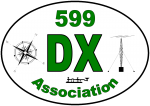QSLing Tips
The Basics
- Successful QSLing starts with the QSO and good logging practices
- Verify clocks regularly (including UTC/local offset in logging programs)
- Log carefully/completely
- Log promptly
- Have your callsign printed on both sides of your QSL card
- Don’t use unusual fonts, especially on the QSO data side
- Avoid uncomplimentary color combinations
- Print QSO data legibly
- Suggest DD-MMM-YY (03-Apr-08) date format, include a legend
- Use UTC time
- NEVER, NEVER, NEVER send a card with QSO data in local time!!!!!
- You would be SURPRISED just how many I receive like this
- Use printed labels if possible
- List multiple QSOs in chronological order
- Neatness counts
- Avoid smudges, test any ink pens or rubber stamps you may use
- Don’t cross out mistakes, start over with a new card
- A card with a cross out or bad smudge may not be accepted for award credit
Envelope Etiquette
- Print recipient’s address clearly and accurately on envelope
- Use return envelopes with “peel and stick” seal flap
- Leave small unsealed opening at each corner of envelope. Most quality envelopes will do this without you needing to do anything other than seal it properly.
- Print your address CLEARLY on your return envelope
- Print a return address on your return envelope
- Either station sending to or your return address
- Avoid folding your return envelope in the sending envelope
- If you must fold, NEVER put the folded part facing the top
- Consider “nested” envelopes from William Plum or other sources
- DO NOT place your card inside of your return envelope
- For US to US mailings
- Place proper postage (in proper location) on your return envelope
- Be aware of pending postage increases, include sufficient postage to cover or Forever Stamps
Tips For Using a QSL Manager
- Utilize the Online QSL Request System (OQRS) if one is available for the station you need a card from. In general, this reduces the “touch time” for answering your requests. Be aware this may be via ClubLog or the manager/station may have their own OQRS site setup. QRZ.COM is usually a good place to find out QSLing instructions for a station.
- Patience
- A busy QSL manager can handle hundreds, if not thousands of direct requests per month
- We often have to wait weeks to receive logs
- Many times QSL cards have to be designed/ordered/printed
- DO NOT send an email 2 weeks after sending your request
- Always send at least an SASE to stateside managers
- Simply sending a card will almost always result in no return or at best a return via the bureau if you are lucky
- Follow basics/envelope tips on earlier slides
- Most of them are designed to optimize manager efficiency
- QSL Managers are not mind readers
- Despite popular belief, special orders don’t upset us, but if you don’t tell us, we won’t know
- Most common example – K5XYZ works 9V1YC on RTTY/CW/SSB, sends one card for each QSO and expects the manager to send him a separate card for each mode, BUT, he doesn’t enclose a note requesting this. Result: K5XYZ receives one card with all QSOs on one or more label(s)
- When sending requests for multiple stations to one manager
- Be prepared to wait until the manager has logs, blank cards, etc from ALL stations before receiving your cards… UNLESS
- You provide separate SASEs for each call requested (and a note)
- Do Not tape ANYTHING to anything else in your request. It really slows us down
- There are times for email
- If you receive a card in error, the manager will almost always resend without another SASE if our mistake
- If an extended time period (2+ months) has elapsed since sending your request with no response, mail does get lost
- Watch the “tone” of the email – it’s easy to inadvertently sound confrontational or demanding
- Donations
- QSL managers have expenses (cards, envelopes, labels, rubber stamps, printer ink, bureau expenses, etc), usually not covered by the DX station
- In my home state of south Louisiana we would call this practice Lagniappe, “A little something extra” – Trust me, we DO appreciate it and it helps a lot!!!


